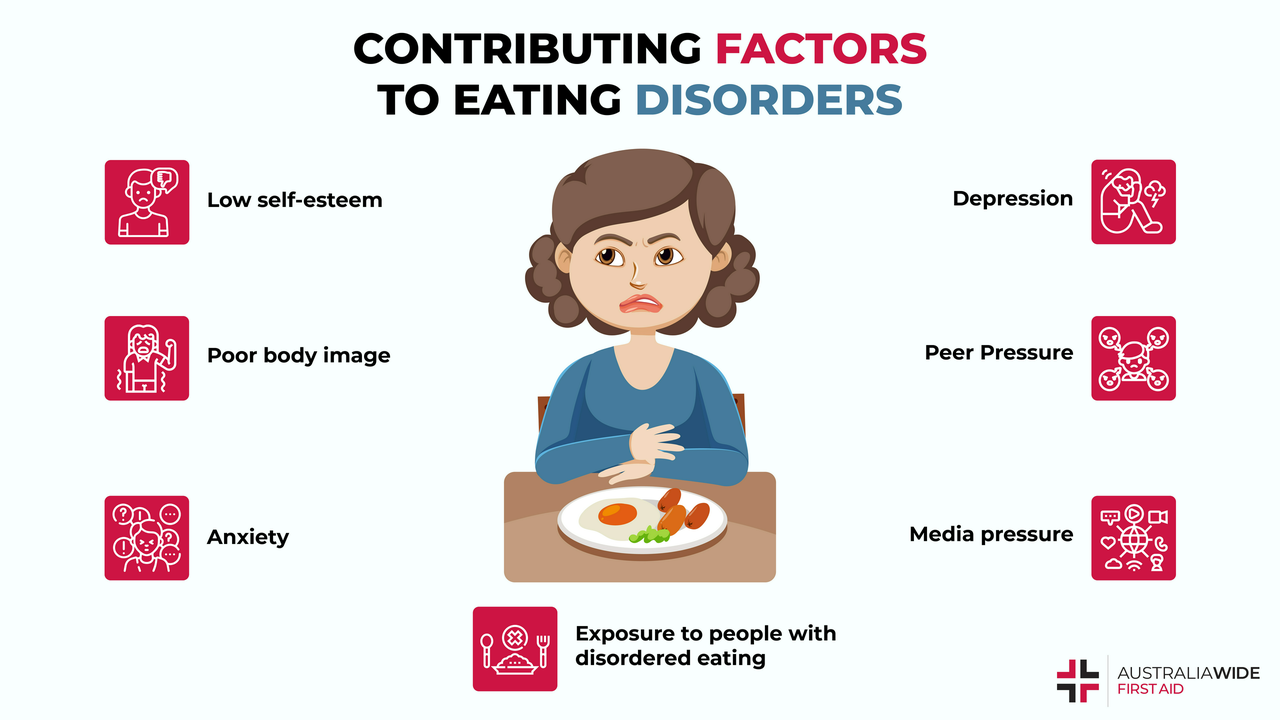Intro: Eating disorders rarely announce themselves with dramatic weight changes or fainting spells. More often, they begin as quiet shifts in daily rhythms—subtle changes easily mistaken for “healthy habits” or “stress phases.” Learning their hidden language could save a life.
1:The Behavioral Whispers
Long before weight changes become visible, daily patterns shift in ways that feel “off” to observant loved ones. Notice when someone suddenly becomes overly invested in food preparation rituals—not just cooking healthy meals, but arranging peas in geometric patterns or chewing each bite precisely 32 times. These aren’t quirky habits; they’re attempts to manage overwhelming anxiety around food. Another red flag hides in social withdrawal: Your foodie friend declines dinner invitations with vague excuses, or your sister insists on washing dishes during birthday cake time to avoid eating. Watch for new rigidity too—the once adventurous eater who now consumes only three “safe” foods, or the colleague who panics when lunch meetings disrupt their strict 12:30 PM eating schedule. Perhaps you’ve noticed water bottles multiplying on someone’s desk—constant hydration can mask hunger pangs or create false fullness. These aren’t choices; they’re distress signals disguised as discipline.
2:The Physical Clues We Normalize
Our bodies whisper warnings long before medical crises erupt. Persistent exhaustion often gets dismissed as “busy lifestyle fatigue,” but when paired with new temperature sensitivity—wearing sweaters in summer or complaining of constant chills—it may signal a metabolism slowing to conserve energy. Notice nail changes: Brittle, blue-tinged nails aren’t just cosmetic issues; they reflect poor circulation from a struggling heart. That “glow” everyone compliments? It might be lanugo—fine downy hair growing as insulation against heat loss—not radiant health. Digestive complaints like new bloating or constipation frequently emerge as gut motility slows. Pay attention to dental changes too—acid erosion from vomiting isn’t always obvious, but increased sensitivity to hot/cold drinks or sudden cavities warrant concern. These signs often get explained away: “I’m just getting older,” or “My stomach’s always been sensitive.” But together, they form a constellation pointing to nutritional distress.
3:The Emotional Patterns We Misinterpret
Emotional shifts often get labeled as “moodiness” when they’re actually neurological red flags. Perfectionism escalating to paralyzing fear over minor mistakes—like crying because store-bought soup has 5 more calories than homemade—reveals anxiety hijacking rational thought. Watch for black-and-white thinking: Foods becoming “good” or “evil,” days deemed “successful” only with extreme exercise, self-worth measured in grams of sugar avoided. Emotional numbness is equally telling—that vacant stare during meals, or disconnection from once-loved activities. You might notice heightened irritability around food discussions: Defensiveness about “why I eat this way,” or anger when others mention their own meals. Most dangerously, sufferers often exhibit paradoxical cheerfulness about their restrictive habits—posting “inspirational” gym selfies while their body breaks down. These aren’t personality changes; they’re neurological adaptations to malnutrition affecting emotional regulation.
4:The Relational Shifts We Downplay
Eating disorders thrive in isolation, quietly altering relationships. Secrecy emerges gradually: Your partner hides wrappers in car glove compartments, your child starts showering immediately after meals, or a friend always eats before gatherings to “avoid temptation.” Defensiveness escalates too—innocent questions like “Want seconds?” trigger disproportionate anger: “Stop controlling my food!” You might notice food policing behaviors: Criticizing others’ meal choices (“Should you be eating that?”), or controlling family grocery lists under the guise of “health.” Financial secrecy often surfaces—mysterious cash withdrawals for binge foods, or unexplained charges from multiple grocery stores in one day. Perhaps family meals feel tense—silent negotiations around portion sizes, or elaborate excuses to leave the table early. These dynamics create walking-on-eggshells atmospheres where everyone senses something’s wrong but fears naming it. Isolation becomes self-reinforcing: The disorder convinces sufferers they’re protecting loved ones by hiding their struggle.
Conclusion: Becoming Fluent in the Unspoken
Recognizing these hidden signs requires looking beyond weight scales and meal sizes. It demands attention to the quiet tremors in behavior, body, emotions, and relationships—the subtle ways a person disappears while still physically present. Trust your intuition when someone’s spark dims amid “perfectly healthy” habits. Early intervention transforms outcomes dramatically. Approach with compassionate curiosity: “I’ve noticed you seem anxious around meals lately—want to talk?” instead of accusations. Remember: Sufferers often feel terrified of recovery, not defiant. By learning this silent language, you become a beacon guiding them back to connection. Healing begins when someone whispers, “Yes, I’m struggling,” and finds you already understood.


